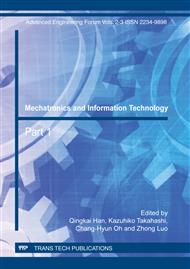p.167
p.172
p.176
p.182
p.188
p.193
p.200
p.205
p.211
Signal Denoise Method Based on the Higher Order Cumulant and Local Tangent Space Mean Reconstruction
Abstract:
In signal denoise method to nonlinear time series based on principle manifold learning, reduction target dimension is chosen at random, which cause low efficiency. Local low dimensional manifold is obtained by the eigenvalue decomposition to the covariance matrix, but covariance belongs to the second order statistics and cannot reflect the nonlinear essential structure of signal, these reduce denoise efficiency and effect. In order to solve these problem, a new denoise algorithm based on the higher order cumulant and local tangent space mean reconstruction is proposed in this reserch. First, the signal's intrinsic dimension is obtained as dimension of reduction targets by maximum likelihood estimation. And then making use of restraining character to colored noise of high order cumulan,covariance matrix is constructed by high order cumulant function instead of second order moment function. The data outside intrinsic dimension space will be regarded as noise signal to be eliminated. Finanly the process of global array by affine transformation will be replaced by mean reconstruction,the data after denoise may be obtained in the inverse process of the phase space reconstruction. The effectiveness of the algorithm is verified through the denoise experiment in fan vibration signal with noise.
Info:
Periodical:
Pages:
188-192
Citation:
Online since:
December 2011
Authors:
Permissions:
Share:
Citation:


